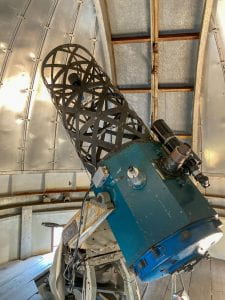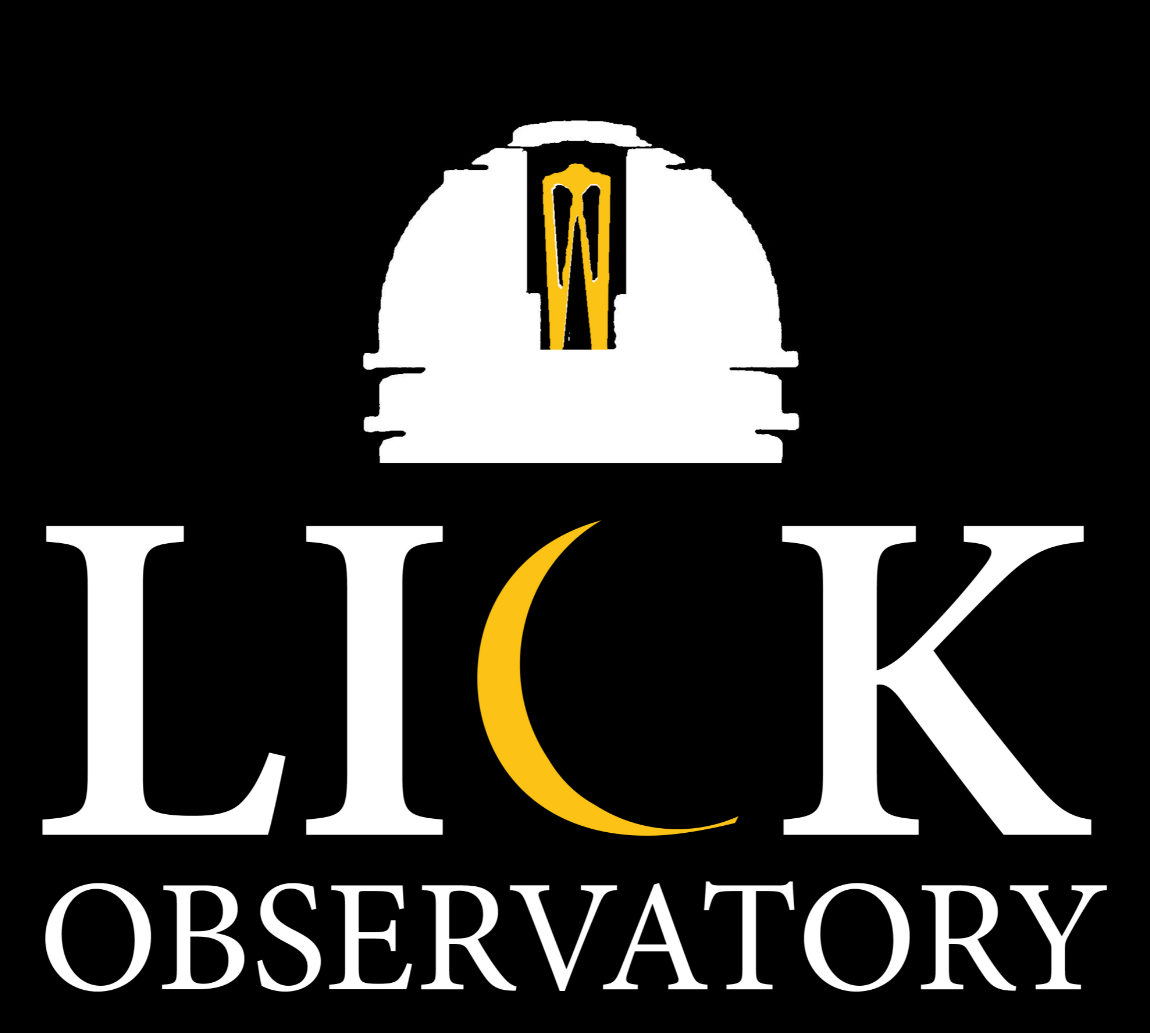Tauchmann 22-inch Telescope

The Tauchmann 22-inch reflector sits atop the historic water tank at Huygens Peak. The telescope was constructed by George Tauchmann in 1937, and at the time was the largest amateur reflecting telescope in the world. Lick Observatory purchased the telescope in 1950. The dome and telescope installation was completed in 1954.
The original purpose of the telescope was to do photoelectric photometry with a telescope that could be operated more easily and quickly than the 36-inch Lick refractor or Crossley reflector. This also reserved the larger telescopes for objects too faint to be studied with the Tauchmann reflector.

James Cumming adapted the Tauchmann for photoelectric observing. Once completed, the telescope was used by Lick Observatory astronomers. An early science program was observing the magnitudes and colors of cluster-type variable stars by Lick astronomers Gerald Kron and Sotirios Svolopoulos. Kron also used the Tauchmann to do six-color photometry to determine the intrinsic colors and color excesses of supergiant stars to compare with similar information for Cepheid variable stars. David Wood and Merle Walker later used the Tauchmann to measure the light curve of β Lyrae, an eclipsing binary star.
The Tauchmann telescope was retired from research use by 1970. It continues to be used for education programs, as well as a telescope that Lick Observatory astronomers and resident staff may use for fun once they have been trained on its operation.
